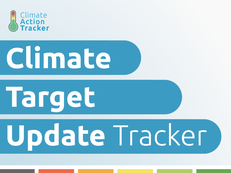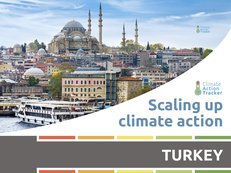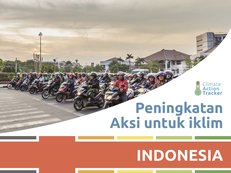News releases
China going carbon neutral before 2060 would lower warming projections by around 0.2 to 0.3 degrees C
23 September 2020 – If China were to achieve its announced goal of achieving carbon neutrality before 2060, it would lower global warming projections by around 0.2 to 0.3°C, the biggest single reduction ever estimated by the Climate Action Tracker. The announcement by President Xi Jinping at the UN General read more...
COVID-19 pandemic adds uncertainty on future emissions – jury still out on whether they'll rise or fall
The Climate Action Tracker today published updated assessments for 12 of the 36 countries it assesses, and has included projections of the effect of the COVID-19 pandemic on 2020 emissions.The CAT team has updated Argentina, Chile, Costa Rica, Germany, Ethiopia, Morocco, Norway, Singapore, South Korea, Turkey, Ukraine and the USA read more...
Japan’s coal power policy reflects the country’s highly insufficient level of ambition to avoid the climate crisis
Japan’s reported plans to shut a number of coal plants will make little to no difference in emissions in 2030 compared with its current Paris Agreement target: it’s disappointing that the country’s focus remains on coal rather than pursuing an aggressive renewable energy strategy.On 3 July 2020, Japan’s Minister of read more...
International shipping and aviation emissions goals both “Critically insufficient”
In its first major assessments of international shipping and aviation, published today, the Climate Action Tracker has rated the 2030 climate targets for both sectors as “Critically insufficient”, and concludes that emissions may continue to rise sharply despite the impact of COVID-19, not least because the actions currently proposed are read more...
Analysis: Green economic stimulus packages can bend the post COVID-19 emissions curve
New analysis released today by the Climate Action Tracker (CAT) points to strong economic and climate change advantages if governments were to adopt green stimulus packages in response to the COVID-19 pandemic. Conversely, if governments don’t roll out low carbon development strategies and policies - or roll back existing climate read more...
Global update: Governments still showing little sign of acting on climate crisis
Madrid --10 December 2019-- In the face of the growing climate emergency, governments seem determined to continue embracing fossil fuels, and even meeting their Paris Agreement pledges would see warming of 2.8˚C by the end of this century, according to the Climate Action Tracker’s 2019 annual update, released at COP25 read more...
The CAT publishes its new “Climate Target Update Tracker” at COP25
The Climate Action Tracker has today published its “Climate Target Update Tracker” that will track governments’ updated 2030 targets (NDCs) as part of their commitment under the Paris Agreement to update them by 2020.The Tracker will analyse in detail both proposed and updated 2030 targets from the 36 countries covered read more...
New analysis: Huge potential for Turkey to scale up climate action and cut emissions
Bu, internet sayfası ve basın açıklaması İngilizce versiyonudur, Türkçe versiyon için burayı tıklayın. This is the English version of this webpage and press release, click here for the Turkish version.Turkey has tremendous potential to scale-up its climate action, and could reduce emissions substantially by 2030 by acting in just three read more...
Yeni Analiz: Türkiye emisyonlarını azaltma konusunda muazzam bir potansiyele sahip
Bu, internet sayfası ve basın açıklaması Türkçe versiyonudur, İngilizce versiyon için burayı tıklayın. This is the Turkish version of this webpage and press release, click here for the English version.Bugün yayımlanan bir analiz, Türkiye’nin iklim eylemini artırma konusunda muazzam bir potansiyele sahip olduğunu ve sadece üç ana sektörde eyleme geçerek read more...
Analisa: Indonesia dapat mengubah jalan untuk mengurangi emisi pada 2030 hanya dengan melakukan aksi di tiga bidang utama
Ini adalah siaran pers dalam Bahasa Indonesia. Untuk versi bahasa Inggris, klik di sini. This is the press release in Bahasa Indonesia. For the english version, click here.Menurut analisa baru yang disampaikan oleh Climate Action Tracker (CAT), Indonesia memiliki potensi luar biasa dalam meningkatkan aksi untuk iklim dengan melakukan penghilangan read more...
Stay informed
Subscribe to our newsletter









